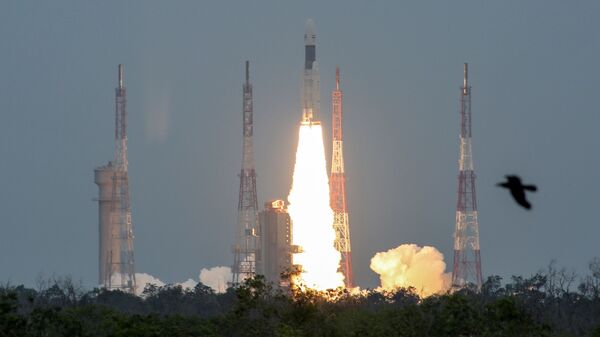Chandrayaan-2 was successfully launched on Monday, on the PSLV Mark III, nicknamed "Bahubali" or the most powerful, with a carrying capacity of 4-tonnes of satellites into the Geosynchronous Transfer Orbit. It is entirely homegrown and uses liquid propellants – liquid oxygen and liquid hydrogen.
"The GSLV Mark III is still small compared to other spacefaring nations' [analogues]. However, as far as technology is concerned, India is one of the best. We don't have the lift-off capability of some of the international players," said Mayank Vahia, space scientist. He added, intellectually and in terms of using space for the good of humanity, India is on the top.
"Eventually the GLSV Mark III will be developed with a 5-6 tonne lift-off capability. However, we need launchers with the capacity to carry satellites of 25-30 tonnes, if we want to be among the leading space powers. At the same time, our satellites are as good as the best in the world, even better than many others," Vahia told Sputnik.
Vahia said the successful launch of Chandrayaan-2 had established India as a nation that has "the curiosity and resources to be an educated, capable and versatile nation."
ISRO partnered with several private enterprises in the country like Godrej and Boyce and Larsen and Toubro, to build its hardware.
"We would like to congratulate ISRO and all the teams that were involved in the successful launch of Chandrayaan-2. I am especially delighted to note that all the stages of the rocket are designed and manufactured in India," Jamshyd Godrej, Chairman and Managing Director of Godrej and Boyce.
Chandrayaan-2 consists of an orbiter, lander and rover, is planned to land on the moon through meticulously planned phases of manoeuvres on the 48th day or 7 September 2019, covering a distance of about 384,000 km. It is carrying 14 payloads to carry out various experiments.
On the cost-front, India is still cheaper than the leading players. The cost of Chandrayaan-2 is the most affordable among Moon Missions, with a budget of $ 142 million or less than half of the recently released Hollywood movie Avengers: Endgame.
India's first successful Moon Mission was in 2008, making history by completing more than 3,400 orbits around the moon. It carried 11 scientific instruments built in India, the US, UK, Germany, Sweden and Bulgaria.




